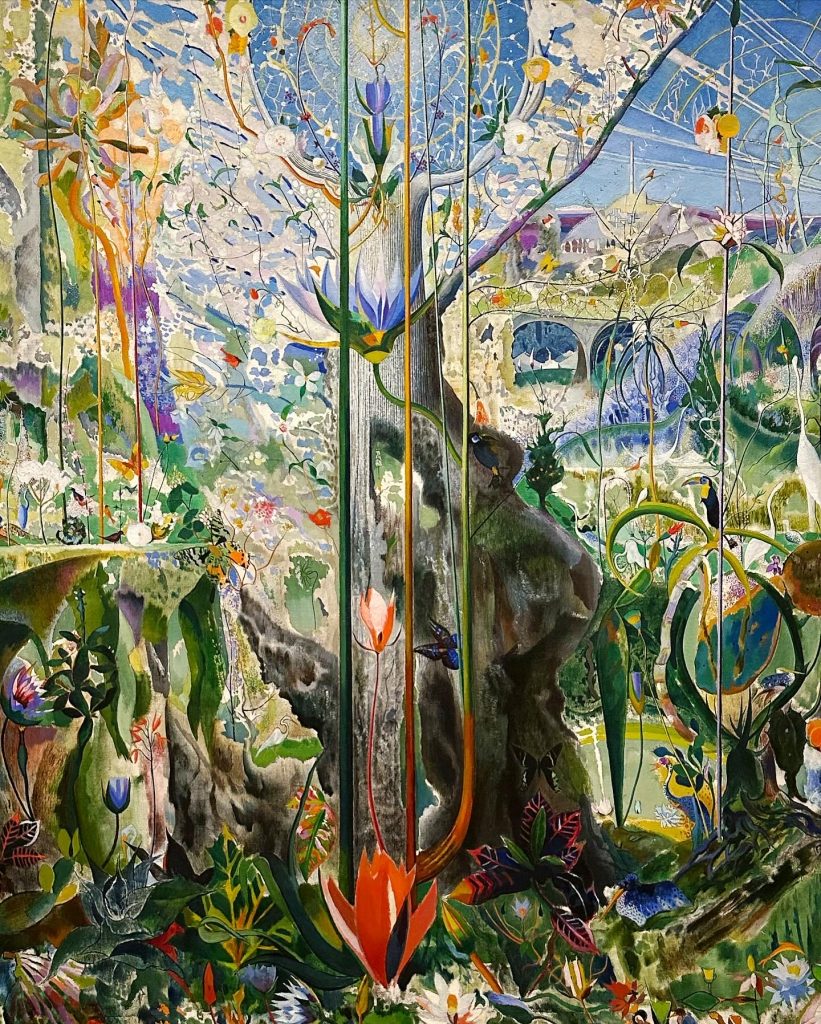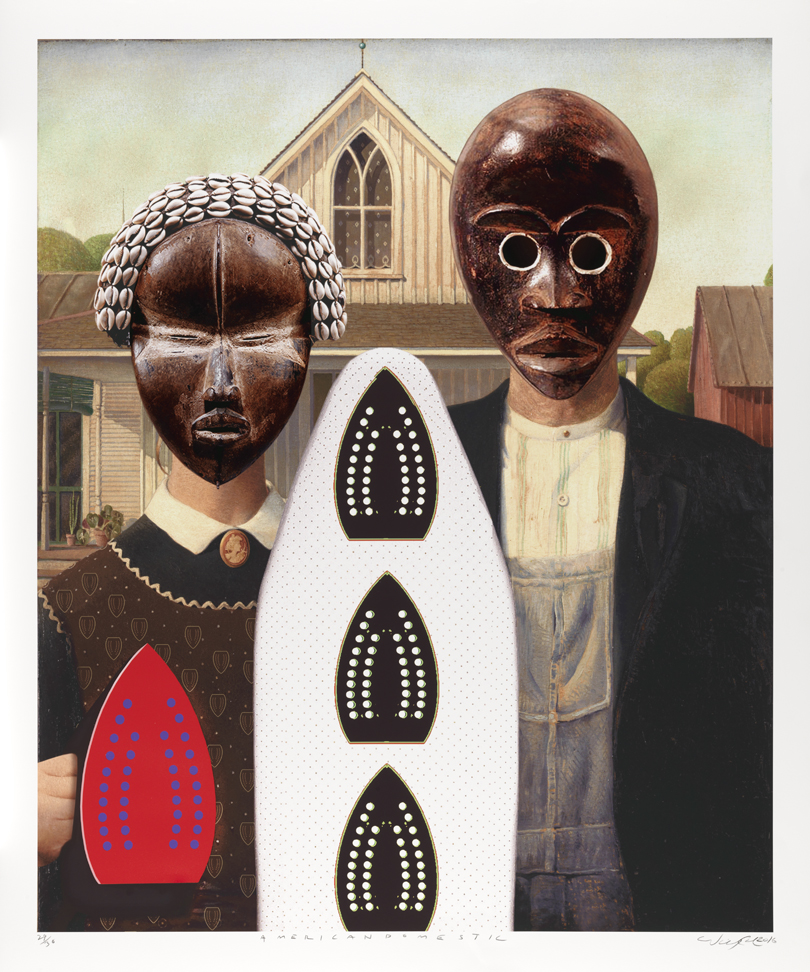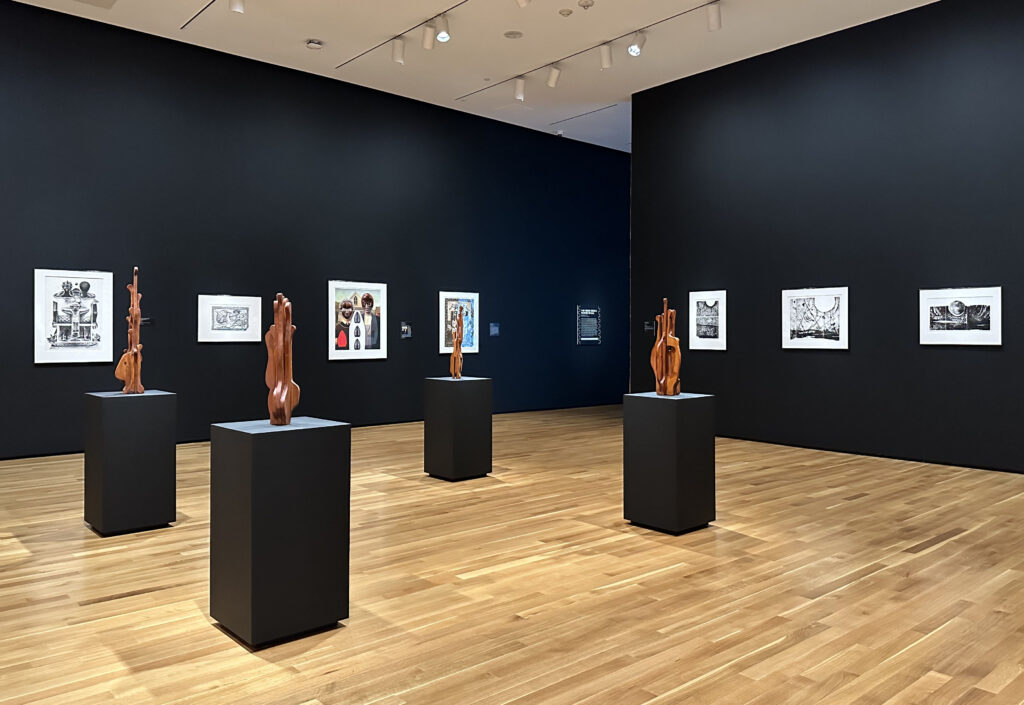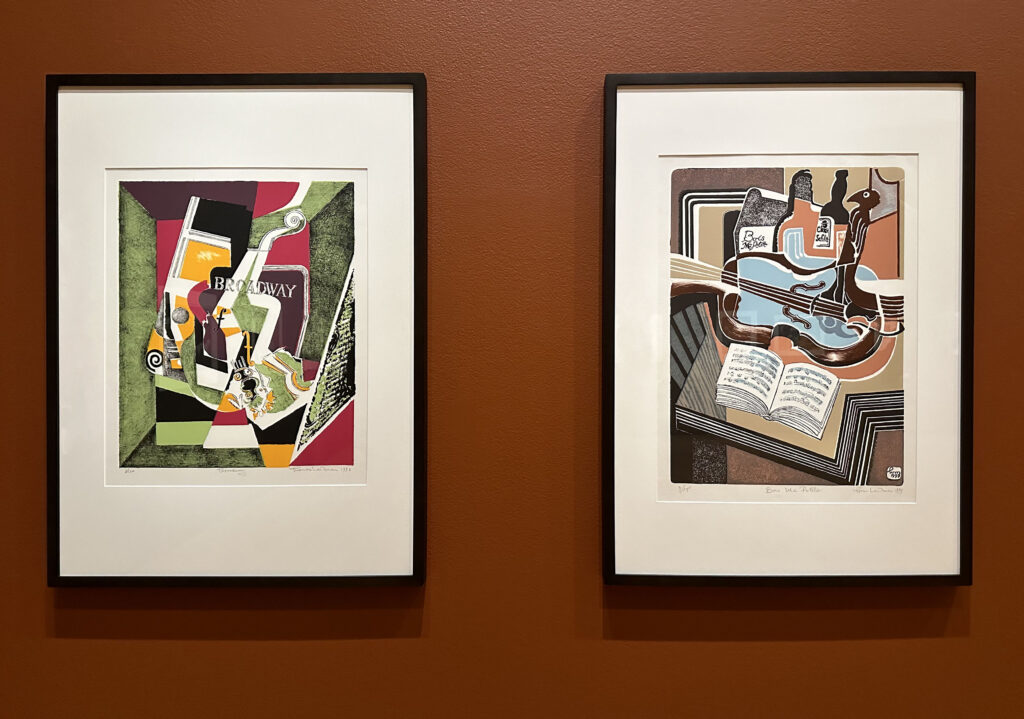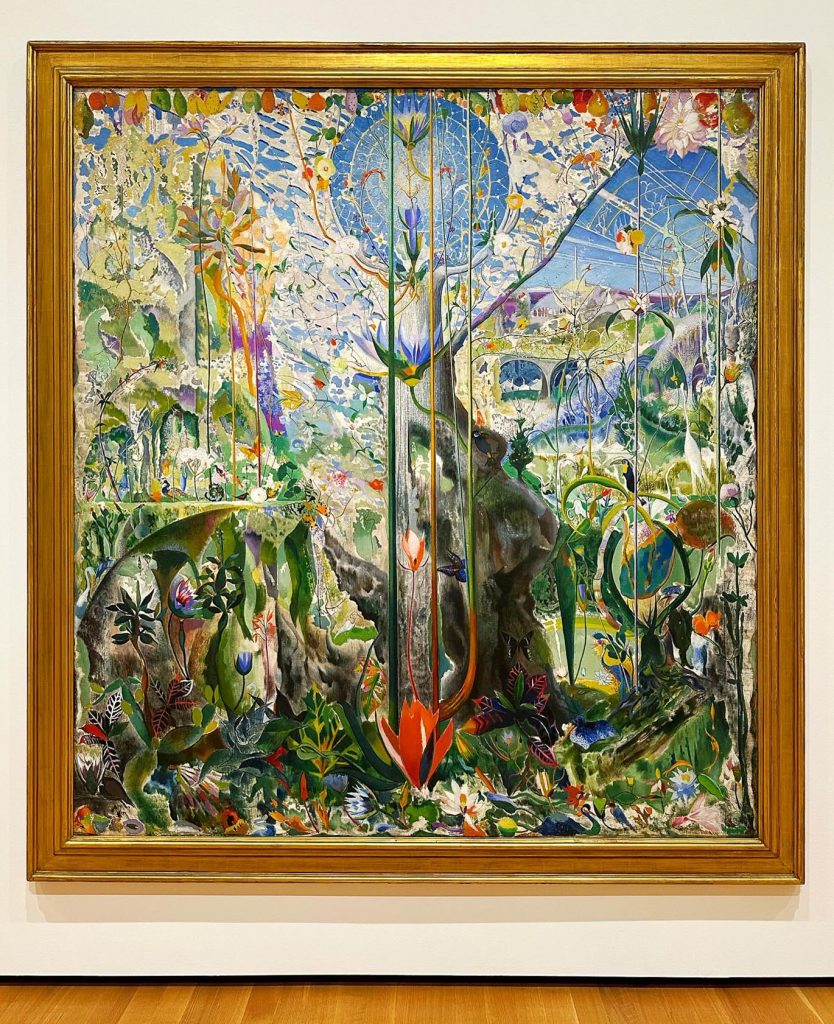
On view as part of the permanent collection at Akron Art Museum is Joseph Stella’s oil painting, Tree of My Life, from 1919.
From the museum about the work-
Joseph Stella described his inspiration for Tree of My Life as an epiphany: “A new light broke over me. I found myself in the midst of a joyous singing and delicious scent … of birds and flowers ready to celebrate the baptism of my new art.” Throughout the painting, forms and colors are infused with symbolic significance. The gnarled tree trunk represents the weathering effect of life’s temptations, while red lilies, blue patches of sky, and white blossoms symbolize lifeblood, divine protection, and spiritual ascendance. Stella, who maintained connections to his native Italy while living in America, combined this dense visual poetry with elements of adventurous European styles. Tree of My Life thus presents a distinctive new vision, marking an important moment in the course of Stella’s career and in the progress of American modern art.
Happy first day of spring! (in the Northern Hemisphere)
